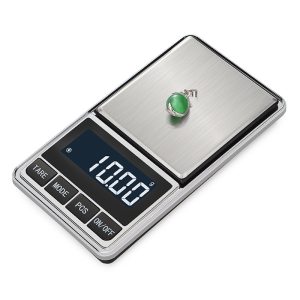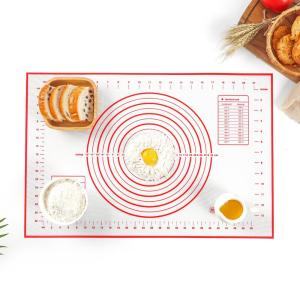30 January is celebrated as World Croissant Day as a result of the popularity of the croissant, which is so popular with its intense buttery scent. For this reason, we decided to take a look at the history of the croissant, which dates back to the 13th century and is known as “croissant” in the world. On this occasion, we learned that the history of the croissant, which we know as a French delicacy, dates back to the Siege of Vienna in the Ottoman period. Let’s take a look at both the croissant eating culture and its origin story
Origin Of The Croissant: From Turkey To Our Coffees
History, or perhaps legend, has it that the croissant was created to celebrate a sly and heroic feat. We are in Vienna in 1683 , besieged by the Turks, when the Austrian capital resisted strenuously, barricaded within the walls. To evade this deployment of forces, the Ottoman troops dug tunnels to emerge directly into the heart of the city and conquer it, but they had not dealt with the bakers who, awake in the middle of the night to work, noticed the “suspicious” movements and they raised the alarm.
With the Turks defeated and freedom won, it was time to celebrate . What better way to remember the victory than to invent a dessert in the shape of the crescent , the symbol of the Turkish empire? Thus revealed the mystery of the origin of the croissant which, if we could, we would eat every morning.
As for French cuisine, France met the croissant in 1770 when the daughter of Archduchess Marie Theresa of Austria married the French heir. Theresa’s daughter, Marie Antoinette, moves from Vienna to Paris due to this marriage, and in 1774 her husband takes the throne. Austrian-born Marie Antoinette, now a French queen, ensures that the crescent-shaped croissants she knows and loves from Vienna are transported to the palace kitchen. Over time, the reputation of the croissant exceeds the limits of the palace, and it becomes one of the favorite tastes of the palace circles and the wealthy, and then of all the people. If the recipe is from Austria, then this flavor from the Ottoman Empire turns into a “famous French flavor”.
Of course, there are many different legends about the past of the croissant. There are those who say that the origin of the croissant can be traced back to the bread made during the Assyrian period, there are those who think that it should be taken as a reference from the first leavened pastry, but the point that many historians agree on is; that the croissant was made in Vienna long before France, and its shape was taken as an example from the Ottoman sanjak. Nowadays, croissants are a French delicacy that is known almost all over the world, with its buttery scent, sweet to salty varieties, and its crispy and puffy form, which can be easily prepared from puff pastry.
Why Is It Called A Croissant?
It is still not clear, however, how from Austria this delicacy based on flour, butter, sugar, yeast, eggs and milk has spread throughout Europe and beyond. In fact, the Viennese pastry chefs called their invention kipferl , from which the Italian cornetto derives, still far from the famous croissant .
The French name, in fact, seems to have arisen from a not very lucky marriage: that between the French dauphin Louis XVI and Marie Antoinette of Austria. Perhaps it will not be true that the Queen of France, informed of the protests of the French who were preparing the Revolution of 1789, said “Do they have bread? Let them eat croissants! ”But it is common knowledge that she couldn’t give up on her favorite breakfast. To the point that from “his of hers” of her Austria she also brought with her the recipe of the kipferl that the pastry chefs of Versailles liked so much that they adopted it, not before having increased the amount of butter provided.
Another tradition, perhaps less fictionalized, attributes the merit of the migration of the croissant from Austria to France to an Austrian officer, August de Zong, who moved across the Alps and opened the Boulangerie Viennoise in rue de Richelieu, in Paris. The small restaurant’s specialty was Austrian cuisine, including kipferl .
The name, however, could not remain that in German. Then the French, getting inspired again by the crescent shape, drew on their imagination by baptizing the delicious dessert as “croissant” which means “growing” , just like the moon and like the dough which, during leavening, grows visibly .
Make Homemade Croissants From A To Z
There are two methods to prepare your croissant: the first consists of making the dough yourself, the second is made with a commercial puff pastry . If you want to make your dough yourself, count one hour in all to have good golden croissants, just out of the oven: 45 minutes of preparation and 15 minutes of cooking.
You will need milk, fresh yeast, flour, sugar and a little salt. The preparation itself is not very difficult: just mix some of the ingredients, leave to rest, then add the rest of the food, knead and then leave to rest.
Once the dough has rested, roll it out, and start the folding work. Then all you have to do is cut the dough into triangles and roll them up. Bake, brush with a mixture of milk and beaten egg yolk and enjoy!
Prepare croissants with purchased puff pastry
For those in a hurry, here is a much faster way to prepare homemade croissants. Unroll the commercial puff pastry (you can also buy it from your baker), cut it into triangles and roll them up. Brush with egg yolk, roast the croissants for 15 minutes at 200°C. Before tasting them, let them cool to room temperature.
How Can You Eat Croissant?
Today, croissants are mostly consumed at breakfast, together with coffee.
The French consume it plain, while the Italians and Austrians consume it with coffee with milk.
Since the dough of the croissant contains plenty of butter, it not only creates a good taste harmony with coffee, but also achieves that indispensable crispness in the oven.
Eating a croissant enriched with cream, fruit or chocolate with orange or apricot jam is also among the common habits.
Those looking for a salty taste can try the croissant with fresh cheeses or smoked salmon.
The croissant also goes well with basil sauces with cheese and smoked turkey.
What to serve with croissants
The croissants are delicious warm or cold. They go perfectly with milk jam, salted butter or honey . But you can also make savory croissants. To do this, slide a slice of ham, béchamel , cheese and a salad into a croissant cut in half. Here you are with a small meal ready in no time!
You can also freeze your croissants already baked or still raw. If they are cooked, leave them at room temperature for a few hours, then put them in the oven at 150°C for a few minutes. If they are raw, simply put them in the oven for 15 minutes at 200°C while monitoring the cooking closely. If you wish to reserve your croissant, put them in the refrigerator but do not exceed 24 hours.
The croissant recipe has many variations, from the aromas used for the dough to the replacement of malt powder with honey. There are also several mistakes that can be made during preparation: even in the laboratory, the croissant is a ritual, and obtaining a perfect pastry, leavening and softness is not at all obvious .
secrets to getting really perfect croissants .
What is important not to forget when you have your hands in the dough? Here are 3 secrets to getting really perfect croissants .
- Be Careful When Choosing Butter
In the preparation of the croissants it is necessary to use a butter that is both workable and plastic : it must spread evenly on the dough, resist the stress of lamination, and therefore have a higher melting point. Better processing allows for better layering and (consequently) better flaking and development during cooking.
For these reasons we tend to prefer flat butter (or in plates) over the traditional stick . Without saving on quality.
- The Fold Defines The Handset
The fold of the dough is the most fascinating moment of processing, crucial in defining (after cooking) the appearance and much of the taste experience offered by the croissant. Let’s start from an assumption: there is no “correct” number of folds to practice . Everyone has their own method, matured according to experience: two four-folds, two three-folds and one four-fold, one four-fold and one three-fold….
The best solution? According to many pastry chefs, probably the three folds to three : with 27 layers the result offers the right fragrance on the outside and a nice alveolation inside, the butter is well bonded with the dough and dirty the pan and hands. With a greater number of layers the pasta is likely to develop less, while with a smaller number you could get more greasy croissants to the touch and to the palate.
- Respects (All) The Leavening Times
12 hours before folding and 15-30 minutes after folding in the refrigerator at 4 degrees, 3 hours before cooking between 25 and 28 degrees . It is annoying but unavoidable, to bake quality croissants the most important ingredients are patience and waiting.
It therefore becomes essential to organize the work in the laboratory: preparing the dough the night before allows you to work a whole half day without too many waiting times, having an easily workable, digestible and flavored dough available in the morning, as well as more performing from the point of view. of flavor and yield.
January 30 is celebrated as Croissant Day
The croissant, which is associated with French cuisine, but was actually born in Austria, preserves its place among the patisserie products that the whole world enjoys for more than three centuries.
As a result of the popularity of the croissant, which is so popular with its intense buttery scent and spread all over the world, January 30 began to be celebrated as the World Croissant Day.







